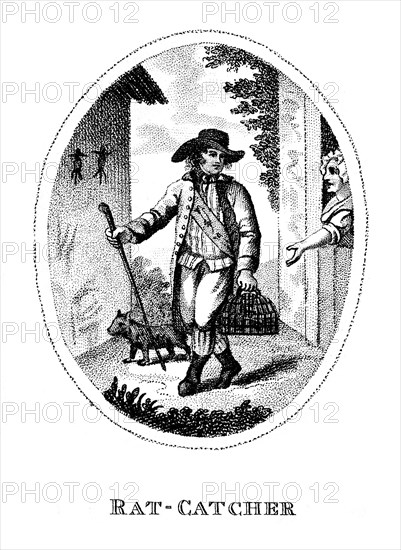
même sujet
Vieuxmetiers12
Sujet
A rat-catcher and his dog; to the right a woman looks on. A rat-catcher is a person who practices rat-catching as a professional form of pest control. Keeping the rat population under control was practiced in Europe to prevent the spread of diseases, most notoriously the Black Plague, and to prevent damage to food supplies. In modern developed countries, such a professional is otherwise known as a pest control operative or pest technician. Rat-catchers may attempt to capture rats themselves, or release ratters, animals trained or naturally skilled at catching them. They may also set a rat trap
Légende
A rat-catcher and his dog; to the right a woman looks on. A rat-catcher is a person who practices rat-catching as a professional form of pest control. Keeping the rat population under control was practiced in Europe to prevent the spread of diseases, most notoriously the Black Plague, and to prevent damage to food supplies. In modern developed countries, such a professional is otherwise known as a pest control operative or pest technician. Rat-catchers may attempt to capture rats themselves, or release ratters, animals trained or naturally skilled at catching them. They may also set a rat trap or other traps. Modern methods of rat control include traps and poisoned bait, plus more holistic approaches such as introducing predators, reducing litter and the clearing of current or potential nest sites. No artist credited, stipple engraving, 1796.
Info+
Photographe : Photo Researchers
Date
26 juin 2018
Crédit
Photo12/Alamy/Science History Images
Notre référence
LMY23T01_T96HA2
Utilisation
uniquement en France
Model release
Non
Property release
Non
Licence
Droits gérés
Format disponible
19,3Mo (992,5Ko) / 18,8cm x 25,8cm / 2220 x 3042 (300dpi)